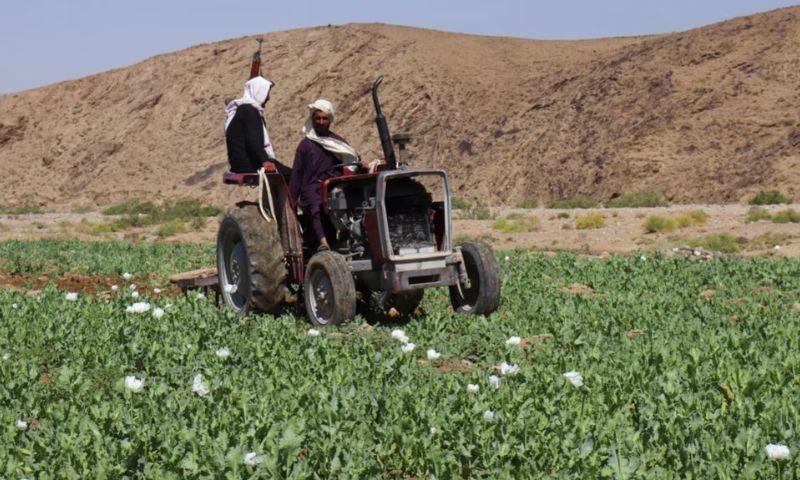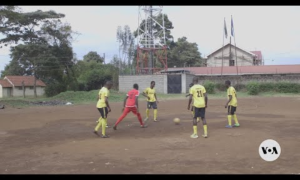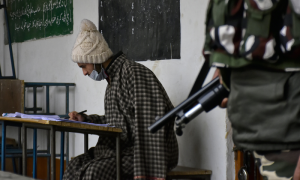WASHINGTON: In an unexpected turn of events, the de-facto Taliban authorities in Afghanistan are celebrating a remarkable series of accomplishments in their battle against narcotics, nearly a year after their enigmatic supreme leader, Hibatullah Akhundzada, issued a decree outlawing drug production.
The Taliban forces have executed an impressive tally of 5,799 counter-narcotics operations, resulting in the arrest of 6,781 drug traffickers, confiscation of 1,799 tons of drugs, and the dismantling of 585 heroin production facilities, as per official reports from Taliban representatives.
These claims are further corroborated by independent observers.
William Byrd, a distinguished researcher at the United States Institute of Peace (USIP), noted, “Just as they had effectively accomplished during 2000-2001, when previously in power, the Taliban have once again successfully curtailed opium poppy cultivation. This has led to a significant reduction in the opium cultivated area for the year 2023.” Byrd shared his insights in a written response to VOA.
Validation for these achievements comes from satellite imagery analyzed by a British organization, revealing significant changes across Afghanistan during the current year.
One remarkable example lies in Helmand province in the southern reaches of Afghanistan. Historically a major hub for illicit drug production, the cultivation of opium poppies has plummeted from a sprawling 129,000 hectares in 2022 to a mere 740 hectares in 2023.
The decline in poppy cultivation and opiate production holds significant importance, considering that for almost two decades after the Taliban’s initial removal from power, Afghanistan had ascended to become the world’s foremost heroin producer, a grim distinction outlined by the United Nations.
The concern was palpable. The illicit drug trade was not only seen as fueling the Taliban insurgency, but it also contributed to organized crime and corruption within the Afghan governmental structures. Consequently, multiple donors, including the United States, committed billions of dollars in an effort to address this escalating issue.
Unfortunately, these efforts seemed in vain.
At the peak of the problem, during the years 2017-2018, when poppy cultivation had surpassed 330,000 hectares, the U.S. Special Inspector General for Afghanistan Reconstruction (SIGAR) highlighted a disheartening fact: “No counterdrug program undertaken by the United States, its coalition partners, or the Afghan government resulted in lasting reductions in poppy cultivation or opium production.”
Speaking from his office in Doha, Qatar, Taliban spokesperson Suhail Shaheen stated with conviction, “The world wanted Afghanistan to address this [counter-narcotics issue], and we have fulfilled that desire. We will continue our efforts until we completely eradicate this problem.”
It’s a well-known fact that the Taliban is known for its strict enforcement of various policies, ranging from prohibiting girls’ education to banning farmers from cultivating opium poppies, a financially enticing yet destructive crop. The latter ban, while commendable from a health and security standpoint, may pave the way for serious domestic issues.
David Mansfield, a perceptive British observer and author on narcotics in Afghanistan, argued, “Through the implementation of a drug ban and the forceful eradication of crops even in remote areas, without providing viable alternatives, the Taliban leadership is running the risk of inciting rural unrest. This could potentially lead to dissent within their own ranks, particularly among Taliban members hailing from these regions, who are accountable to their families, neighbours, and the rural populace.”
Isolated by international sanctions and grappling with a range of security, governance, and economic challenges, the Taliban faces an uphill battle in detaching Afghanistan from its long-standing dependence on the drug trade.
The opium poppy ban, while undoubtedly noble in intention, has also delivered a considerable economic shock of around $1 billion annually to the already fragile Afghan economy, as noted by Byrd of the USIP.
Strident enforcement of the ban might inadvertently exacerbate the struggling economy, compelling individuals to seek employment and income opportunities abroad, and contributing to a potential brain drain.
We have reached out for international aid, affirmed Shaheen, the Taliban spokesperson, whose recognition as Afghanistan’s representative at the United Nations remains contested, with the previous government’s appointee retaining recognition.
However, these appeals have largely gone unanswered, as various donor nations condemn the Taliban’s gender-segregated regime in Afghanistan, where the erasure of women from public life has drawn global criticism.
As the international community grapples with the ethical quandary of supporting the Taliban in their anti-narcotics efforts or continuing to pressure them for improved governance, some might conclude that a continued albeit regulated flow of drugs from Afghanistan could be the lesser of two evils, according to Mansfield’s analysis.
While the majority of narcotics produced in Afghanistan ultimately find their way into Europe’s black markets, the United States, having been the principal donor for counter-narcotics initiatives in Afghanistan, with $9 billion in funding until December 2021, has been making efforts to address the issue.
Over the past couple of years, the U.S. State Department’s Bureau of International Narcotics and Law Enforcement Affairs has sustained funding for counter-narcotics campaigns, including messaging, production monitoring, and alternative livelihood projects, conducted through the United Nations and other international organizations.























